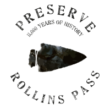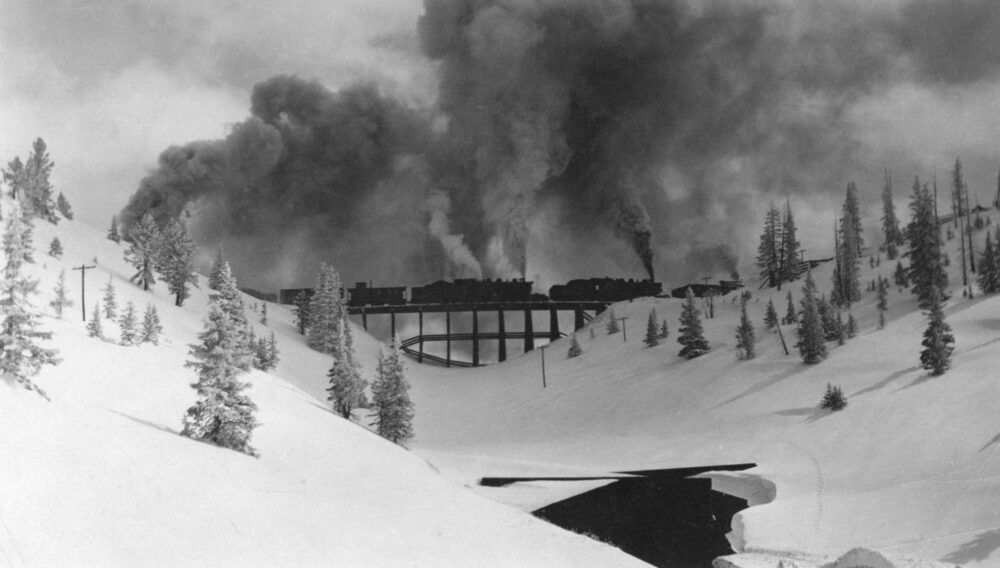Presentation Samples
Preserve Rollins Pass co-founder, B. Travis Wright, MPS is an award-winning and bestselling author of historical research; he presents on history, historiography, physiography, and preservation of endangered sites—including Rollins Pass and the Moffat Tunnel—across Colorado and online. Presentation samples and text are below:
Celebrating the renovation and re-opening of the Yellow Schoolhouse in Tolland at Rollins Pass | July 2022
Speakers (in order of appearance): Opening remarks by H. Wolcott Toll, PhD: Tolland Ranch, LLC; area history by B. Travis Wright, MPS: Preserve Rollins Pass; School and Tolland history by Margaret Ramaley Lovell; concluding remarks by H. Wolcott Toll, PhD. In addition to being eligible for the National Register of Historic Places and the Colorado Register of Historic Properties, this property is Gilpin County Landmark Eligible. The distinctive yellow color is ‘Hawaiian Pineapple.’
Colorado State University Extension | Culture and History of Rollins Pass | March 15, 2021
Learn about the vast history and prehistory of Rollins Pass in this engaging presentation. We will discuss the history and culture of Rollins Pass through photos and archeological artifacts of the sub-alpine to alpine ecosystem, and the sensitivities of ancient and more recent cultural resources. Rollins Pass contains the greatest known concentration of alpine game drives in North America. These Native American hunting traps dates as early as 6000 years ago, with most dating to the last 2000 years. The presentation will discuss how ancient hunters built and used these traps, and why the physiography of the pass was critical to their success. The presentation will also cover comparatively more recent history from John Quincy Adams Rollins’ toll wagon road over the Continental Divide to the Moffat Road “Hill Route” over Rollins Pass.
Speakers: B. Travis Wright, historian and author of Rollins Pass; Jason LaBelle, Director of Center for Mountain and Plains Archaeology and Associate Professor at CSU Department of Anthropology and Geography.
Rollins Pass: A Great Gate (Slide Demonstration)
B. Travis Wright, MPS has proven expertise in building Keynote presentations with dazzling special effects, video, photos, and more than seven dozen builds/animations per slide. Event attendees have remarked, “I’ve seen thousands of presentations and this has to be the best, neat, and cool, understandable, colorful presentation I have ever seen.”
Historian Marshall Sprague wrote about mountain passes serving as ‘Great Gates’ funnelling humans and animals from one side to the other—Rollins Pass absolutely fits the definition of a Great Gate. An example (without voiceover) is showcased below of how the mountains comprising Rollins Pass have been used as a Great Gate for millennia:
Rededication and Unveiling of the Moffat Cup with Dana Crawford | Union Station Great Hall, Denver—September 6, 2019
TRAVIS:
Thank you so much, Brad. You have done an incredible job putting this together so that the world can marvel at this masterpiece in Denver’s reinvigorated transportation hub. You, alongside History Colorado and others, have helped ensure one inscription on the cup rings true: “this tribute… will remain an inspiration for all the years to come.”
Thank you all for coming this evening and a warm thank-you to those names appearing on the plaque, including those who donated in memory of others. We continue the trend honoring someone so integral to both Denver and Colorado history. Moffat in a sense, is immortal.
Kate and I wanted to speak about the Gateway to the Rockies along a short stretch of the Moffat Road that once served as the rail route over the Continental Divide for nearly a quarter-century, prior to the opening of the Moffat Tunnel.
Professional archaeologist Dr. Jason LaBelle shares that “Historian Marshall Sprague once wrote of the ‘Great Gates’ guarding the rugged Rocky Mountains and their importance to history. These gates were passes—serving to funnel humans and animals across the mountains and conveniently from one drainage to the next. Rollins Pass of the Colorado Front Range certainly deserves company among the list of Great Gates defining the history of the American West.”
KATE:
Rollins Pass has served as a Great Gate for millennia. The pass was first used extensively by Native Americans, then in the latter half of the 19th century, John Quincy Adams Rollins built a toll-wagon road over what was then known as Boulder Pass. It was in this era when the beauty of Rollins Pass was captured in writing, this quote by Samuel Bowles from 1869, “Everywhere about us, where the snow and the rocks left space, were the greenest of grass, the bluest of harebells, the reddest of painter’s brush, the yellowest of sunflowers and buttercups. All, with the brightest of sun and the bluest of sky… that we were in raptures with the various beauties of the scene and feel still that no spot in all our travel is more sacred to beauty than this.”
Ultimately, David Moffat looked at the mountains west of Denver and saw not an obstacle but a pathway, or Great Gate, to connect Denver and thereby further enhance Colorado’s prosperity. A 1909 newspaper article in The Steamboat Pilot described the view from the summit of Rollins Pass, “On top at almost 7,000 feet above the city of Denver, at the highest point ever reached by a standard gauge railway, in a region of perpetual snow, mountain peaks, and seemingly on the roof of the world. Succeeding the feeling of almost reverential awe which comes over one who views that scene of magnificent solitude and grandeur, comes the thought of what a wonderful work David H. Moffat has accomplished in building such a railroad through that tangled mass of mountains.” End quote.
TRAVIS:
Rollins Pass has always held a special place in many hearts both then and now. Since the approval for the abandonment of the rail line over the pass in 1935, countless ideas have been offered for balancing access with the appreciation and preservation of history and the many stories the area holds. Rollins Pass is twice listed on the National Register of Historic Places and is one of Colorado’s most endangered localities. The Smithsonian also helps support the efforts of documenting, conserving, and protecting National Heritage Sites, including those on Rollins Pass.
The Rollins Pass story is intricately complex, with many intersecting layers of history. In fact, just last year, a Paleoindian artifact dating to more than 11,000 years ago was found on Rollins Pass. Eleven thousand years. This artifact was created and was resting atop Rollins Pass waiting to be discovered fifty-five centuries before the invention of the wheel, sixty-four centuries before the construction of the pyramids of Giza in Egypt, and seventy-three centuries before the creation of the alphabet.
We, the public, benefit from the professional archaeology and preservation work done by History Colorado, the US Forest Service, Colorado State University, museums and historical societies, among many others. Preservation is paramount and something to be celebrated: this immaculate cup exists today because someone many generations ago, thought it wise to preserve it for us; the same approach must be taken when considering how best to preserve this Great Gate that we call Rollins Pass. Thank you.
The primary purpose of our work is to inform the public.

